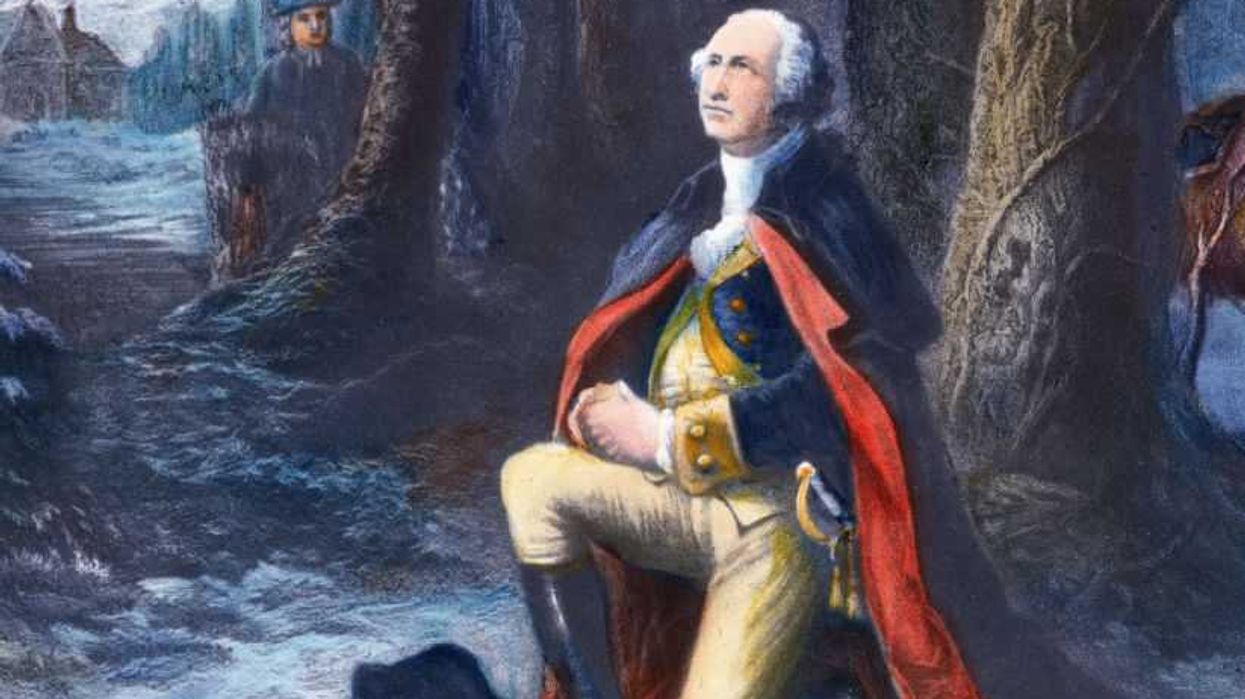Editor's note: This article was originally published on TheBlaze.com.
American families are struggling more today than they have in a very long time, but guess whose portfolios are not struggling? Members of Congress. Is that fair? Is that why we sent them to Washington?
Wealth redistribution is a con. Money doesn’t flow from the billionaires to people in the middle and lower classes. It flows to the people writing the laws.
The newest Blaze Originals documentary, “Bought and Paid For: How Politicians Get Filthy Rich,” debuted on Tuesday, and I am still shocked that we are the only ones addressing this topic head-on. You should watch it. This is something that we need to fix because the soul of our country is being tainted. Our members of Congress have been compromised, and they are voting on policies that prefer their portfolios over their constituents.
The term “redistribution of wealth” has been the rallying cry of radical leftists for more than a century. From Karl Marx to the Bolsheviks and Mao, they all stated, in their own ways, that they wanted to take money from one group of people and give it to another group of people. The popular campaign catchphrase paraded by the left, “An economy for everyone,” is the utopian — or dystopian — end goal of this wealth redistribution. But who did leftists actually mean by “everyone”? Where was all the money going?
In the Soviet Union, members of the working class didn't improve their station in life. It was the political class that got rich and reaped all the rewards. Mao, while millions were starving to death, had his own indoor swimming pool. “An economy for everyone!” That phrase is now being used as the rallying cry by some of the most powerful political institutions and elected officials in the country right now.
We wonder why people like Joe Biden and Nancy Pelosi stay in office for 927 years. Why leave? There’s too much money to be made.
Hillary Clinton campaigned on creating an “economy that works for everyone.” The country's largest progressive think tank, American Progress, has a policy plan for “building an economy for all.” Moreover, former House Speaker Nancy Pelosi (D-Calif.) wants us all to know that “congressional Democrats will build an economy that works for everyone, not just the elites.”
But who are these elites they keep talking about? Every time this rhetoric has been used in the past, whether that be in Russia, China, Cuba, or Venezuela, the elites became the people writing the laws. They were the ones that got rich.
History has shown that the redistribution of wealth is a con. Money doesn’t flow from the billionaires to people in the middle and lower classes. It flows to the people writing the laws.
How did you do at the stock market last year? The S&P 500 did well, closing out the year with a 24% gain. Though you can’t actually invest in the S&P 500 as a whole, you can invest in an exchange traded fund called SPY. SPY tracks the overall S&P 500 performance, so most of the people like you and me, if you invested, saw a 24% return last year.
There are experts who track the S&P 500 and the SPY ETF for a living. According to public records, however, certain individuals “out-experted” the experts. One of these supposed financial geniuses saw a 238% return last year and beat out the experts at the SPY EFT by 200%. How is that even possible? What is this person's secret?
Others in this select group of trading gurus out-traded the SPY EFT by 40% at a minimum. Who are these financial gurus? Because I want to find out their secret. They must be a collection of financial geniuses doing crazy nerdy calculations.
It turns out that these financial geniuses are none other than Brian Higgings (D-N.Y.), Nancy Pelosi (D-Calif.), and Dan Crenshaw (R-Texas) among other members of Congress. I know they hold the power of the purse, but I don’t think this is quite what the framers had in mind.
How is Dan Crenshaw destroying the SPY EFT’s performance? Did they teach advanced stock trading during Hell Week in SEAL training? Members of Congress have gotten so good at picking stocks that people are now following their moves rather than hiring a professional stockbroker. You can find websites like this one that monitor Nancy Pelosi's purchases. Who needs a professional anymore? Just copy the financial genius of your local congressman.
It is no secret why members of Congress suddenly become financial whiz kids once they get elected. I'm not directly pointing the finger at anyone and saying they did anything illegal, but two words sum up all this behavior: insider trading.
ABC News in 2011 exposed how Visa attempted to bribe Nancy Pelosi as critical credit card legislation was being debated in Congress. It noted how Visa offered her an IPO while the bill was making its way through Congress.
Lawmakers, as it now stands, can hold private meetings with corporate representatives whilelegislation is being debated that could help or hurt them, giving lawmakers the opportunity to turn around and make stock moves based on that information. According to the same ABC News story, “This form of insider trading is one of the reasons why there are so many wealthy members of Congress.”
None of this is a secret, even though both Republicans and Democrats try to downplay it in the public eye. What makes this even crazier is that if you or I did that we’d go to jail. But Congress has a loophole. According to Loyola University:
If you are a member of Congress, there is a loophole. … There isn’t a limit on lawmakers trading stocks based on classified information nor is there oversight regarding the trades that lawmakers are allowed to make based on other information they are privy to as part of their job.
Is this how Congress is beating the market? Members know all the chess moves before anyone else does. They’ve read the other team's playbook before the game was played. But you and I are not allowed to.
We wonder why people like Joe Biden and Nancy Pelosi stay in office for 927 years. Why leave? There’s too much money to be made — but not for the average American.
We wonder why our country is kept in a constant state of war. Is there any incentive for Congress to stop forever wars when it's allowed to invest in military industrial complex corporations like Lockheed and Raytheon?
We wonder why the government wants more control of health care and why they’re doing such a hasty transition to unreliable energy. But how many congresspeople currently hold medical and green energy stocks?
While people like Nancy Pelosi scream about the top 1% and how the rich need to redistribute to the poor, this is the system they really care about. This is the “economy for everyone.”

 AASHISH KIPHAYET / Contributor | Getty Images
AASHISH KIPHAYET / Contributor | Getty Images Harold M. Lambert / Contributor | Getty Images
Harold M. Lambert / Contributor | Getty Images Adam Gray / Stringer | Getty Images
Adam Gray / Stringer | Getty Images Anadolu / Contributor | Getty Images
Anadolu / Contributor | Getty Images